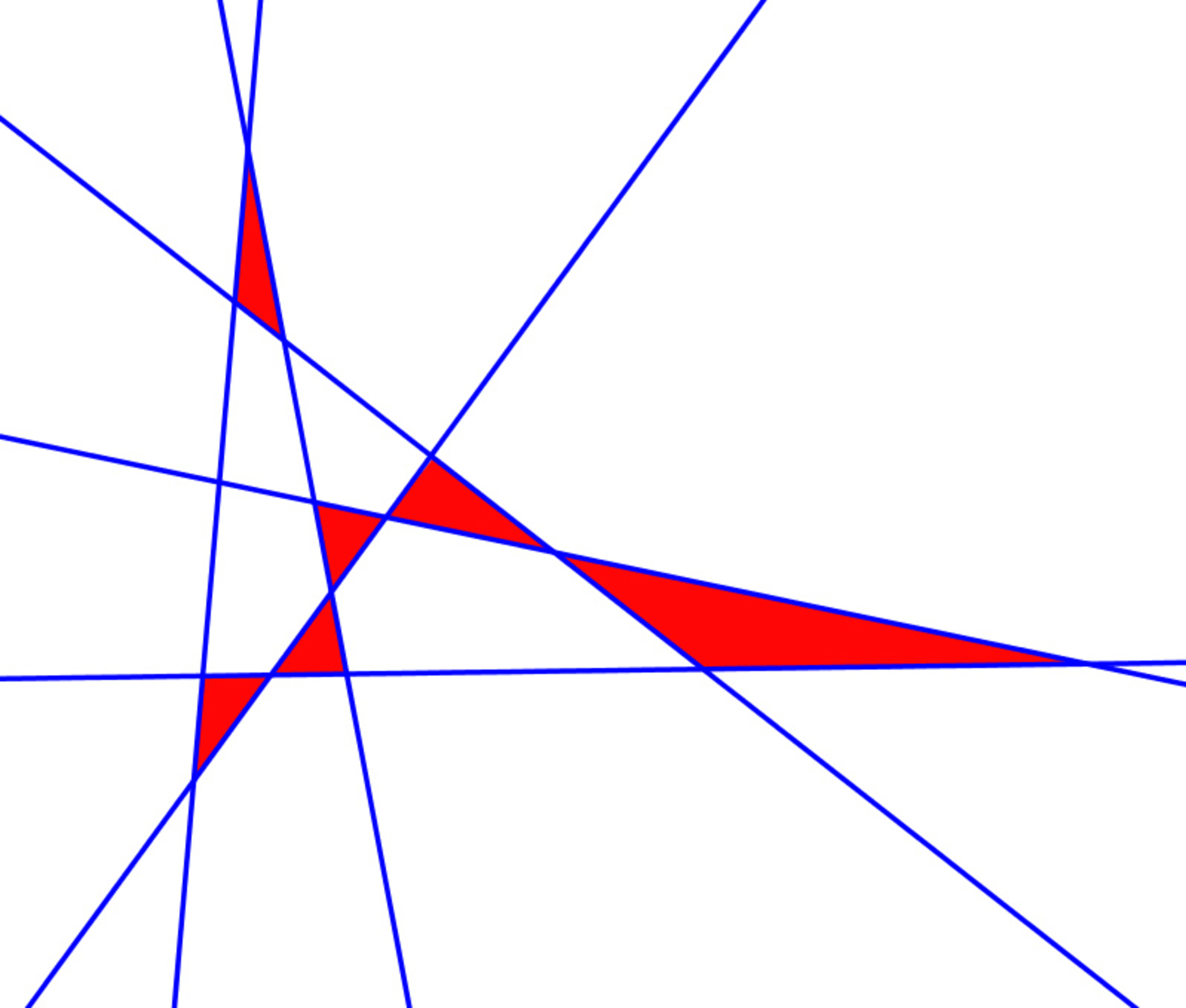Combinatorics in geometry
We draw lines in the plane. These lines cut the plane in parts.
Of these parts exactly have a finite area.
Of these parts exactly are triangles.
Let be the maximum value of and let be the minimum value of .
Find the value of .

The answer is 2032464.
This section requires Javascript.
You are seeing this because something didn't load right. We suggest you, (a) try
refreshing the page, (b) enabling javascript if it is disabled on your browser and,
finally, (c)
loading the
non-javascript version of this page
. We're sorry about the hassle.
This is not a really detailed solution, but this can help to solve the problem.
k number of points cut a line into k + 1 part.
By using induction, we get that 2 0 1 7 lines cut the plain into maximum 2 1 ( 2 0 1 7 2 + 2 0 1 7 + 2 ) parts. From these parts there will be 2 ( 2 0 1 7 ) parts which have an infinite area.
Let's call the intersections of the straight lines to the vertices. Find the nearest vertices (or one of them) on each straight line. The straight lines which include this vertex define a triangle. There can be no point on either the inside or the perimeter. It is easy to see that there can be maximum two straight lines which have only one side which have vertices. So at least 2 0 1 5 straight lines will have a one-one triangle in each side. We calculated each triangle three times.
So x = 2 1 ( 2 0 1 7 2 + 2 0 1 7 + 2 ) − 4 0 3 4 and y = 3 1 ( 4 0 3 4 − 2 ) .
The answer is x + y = 2 0 3 2 4 6 4 .